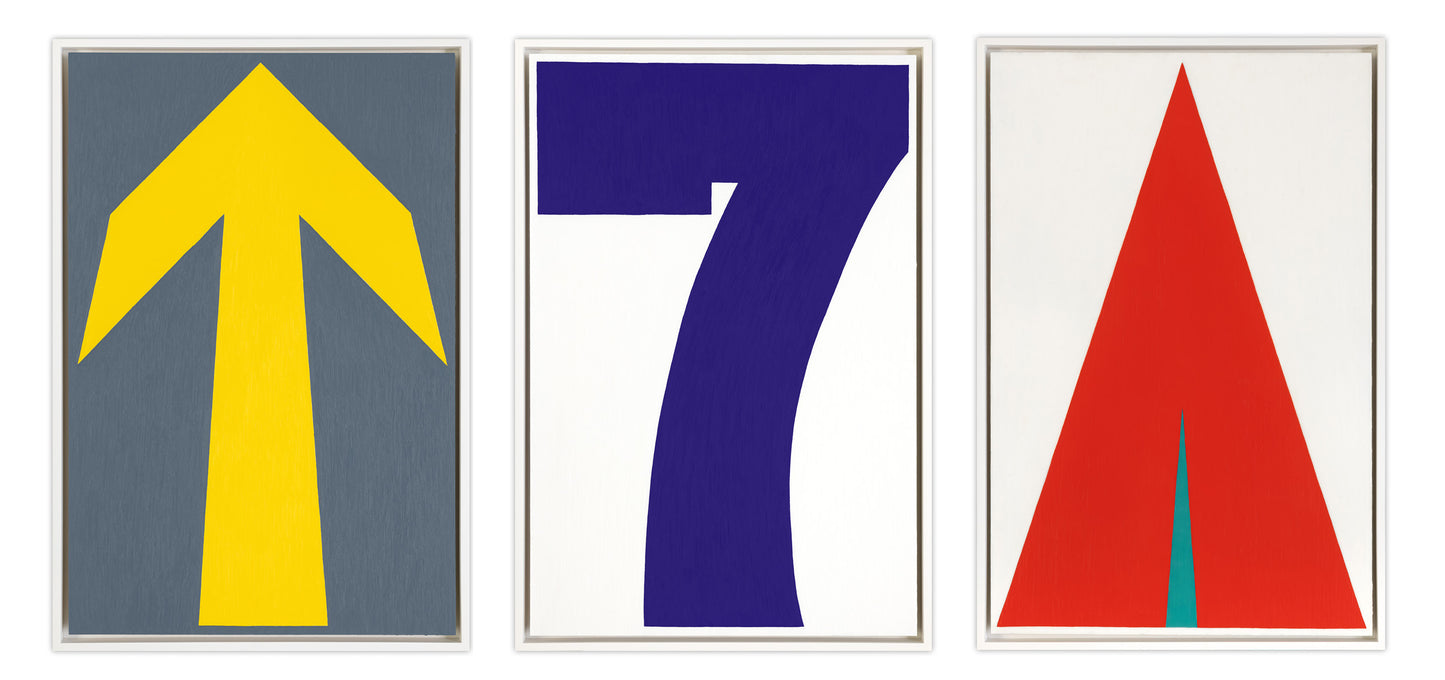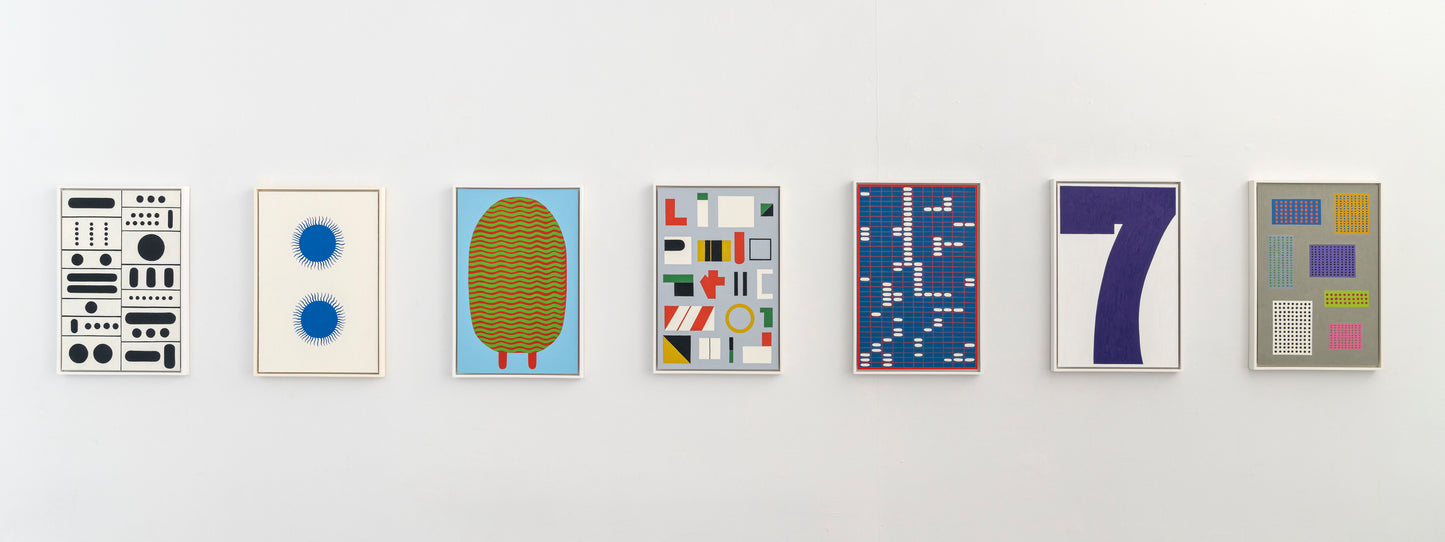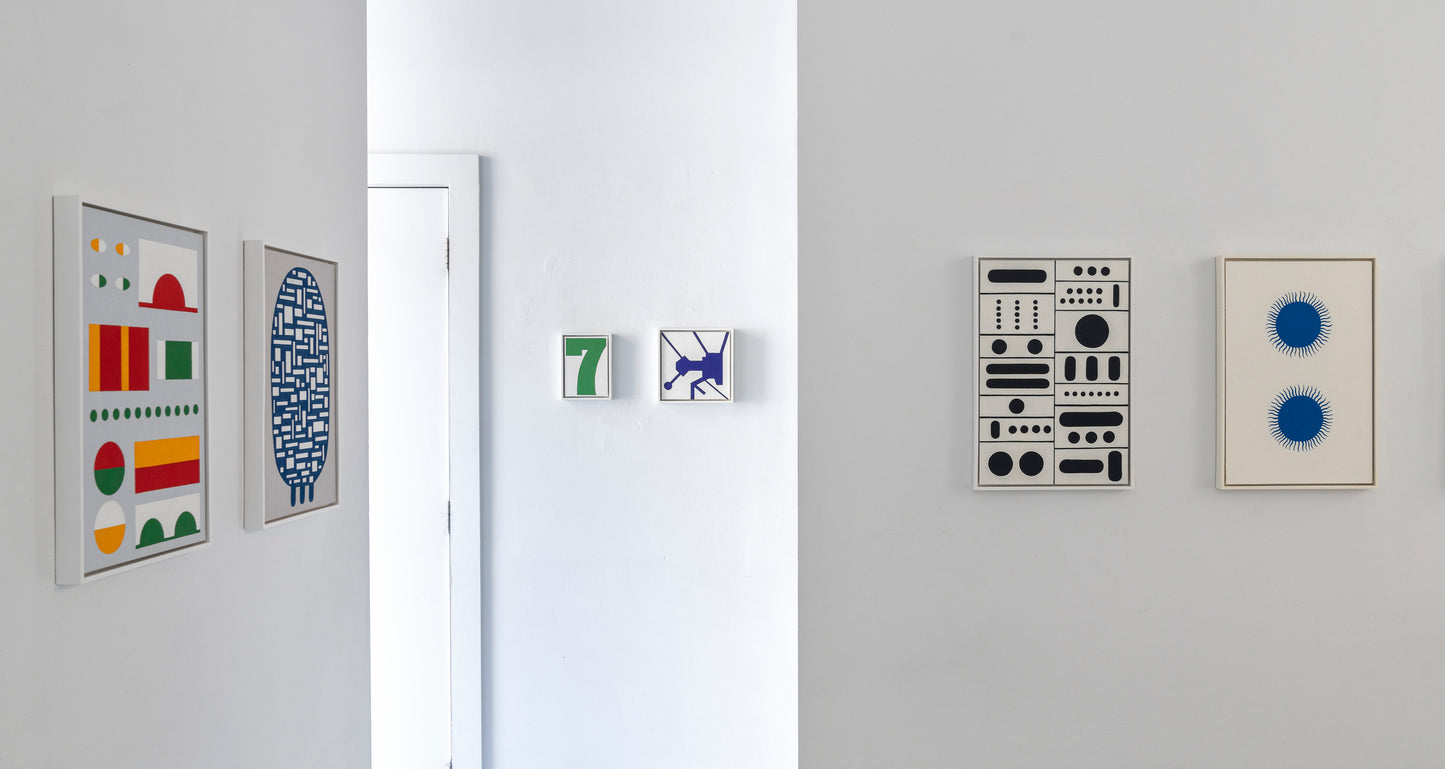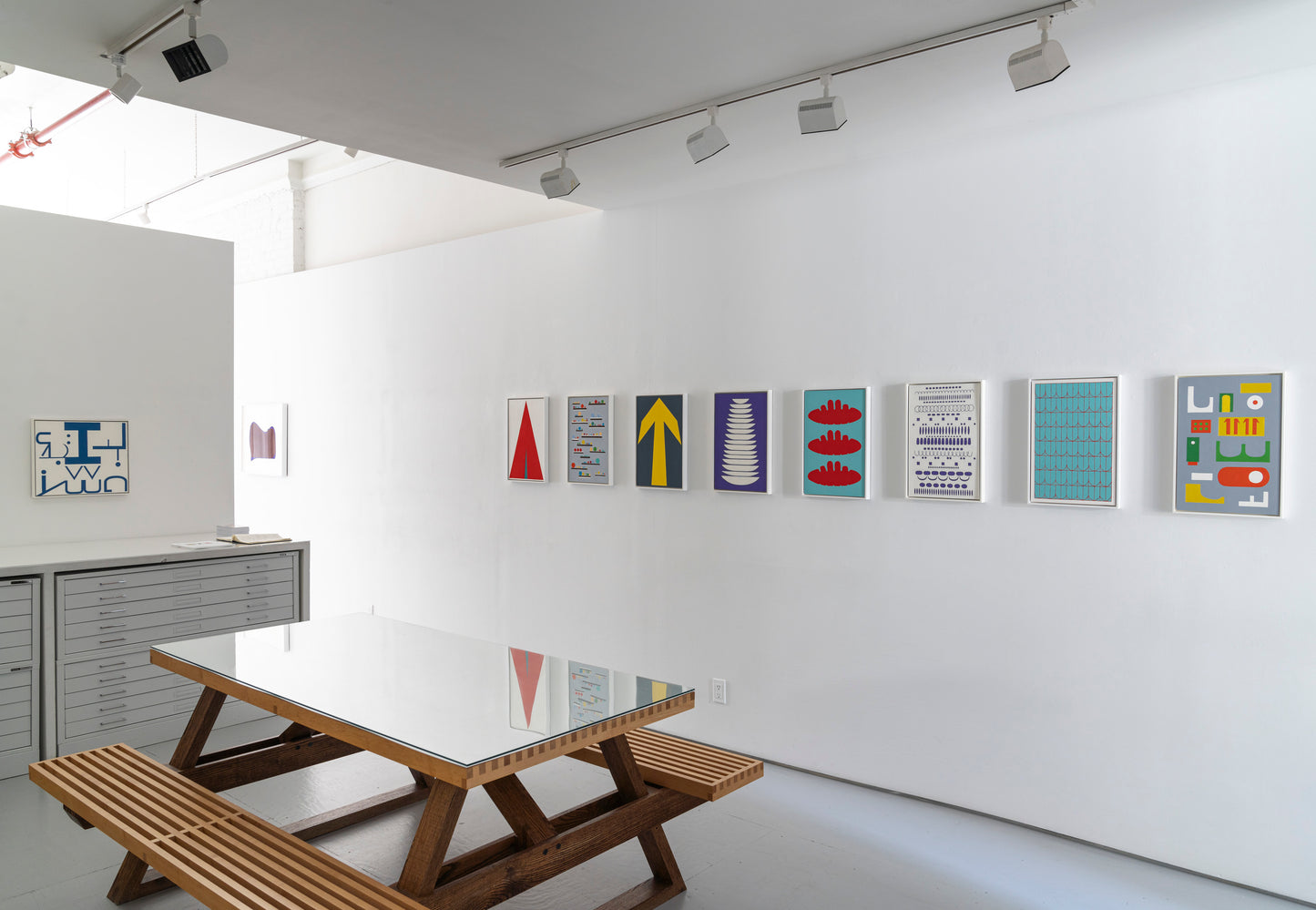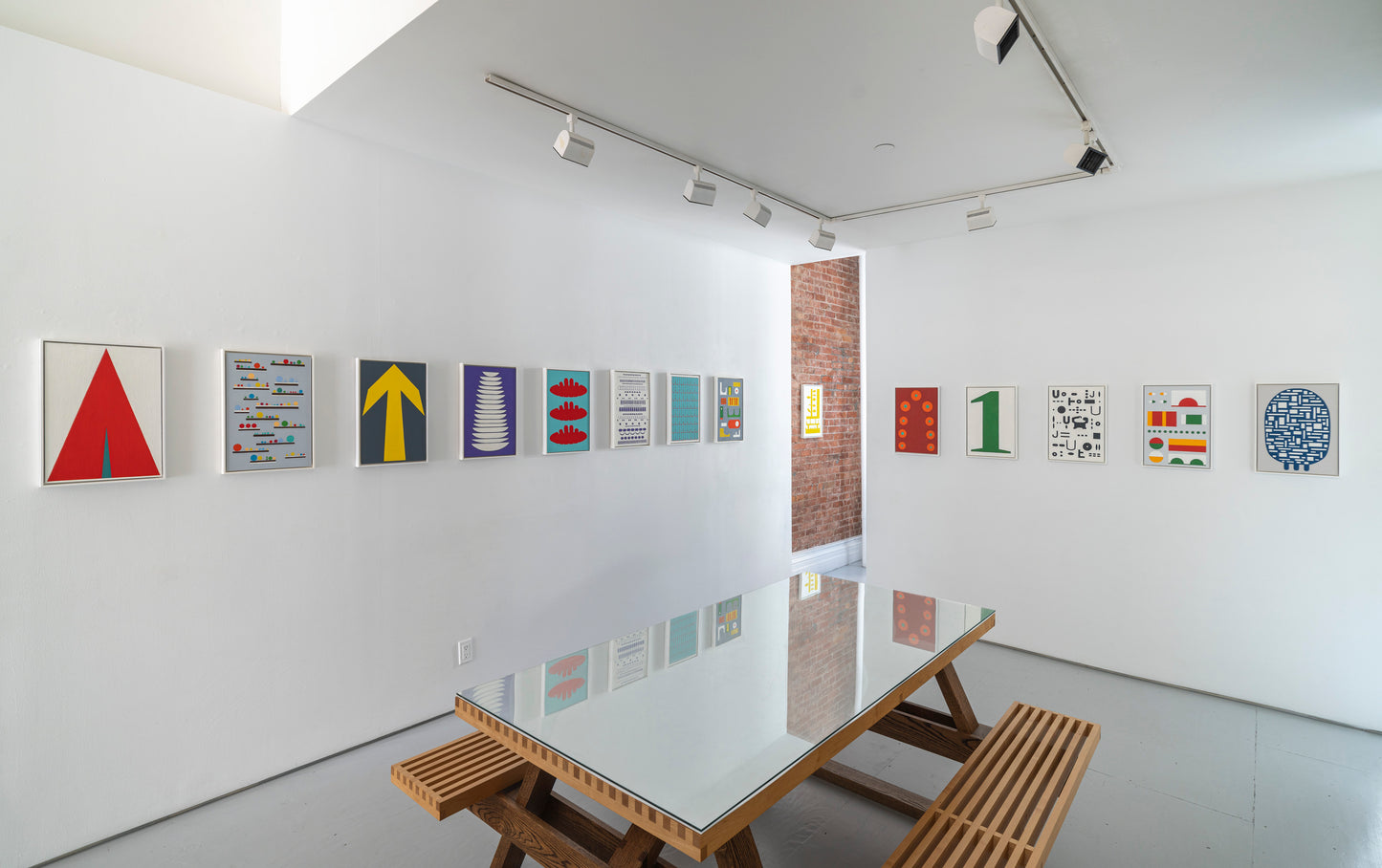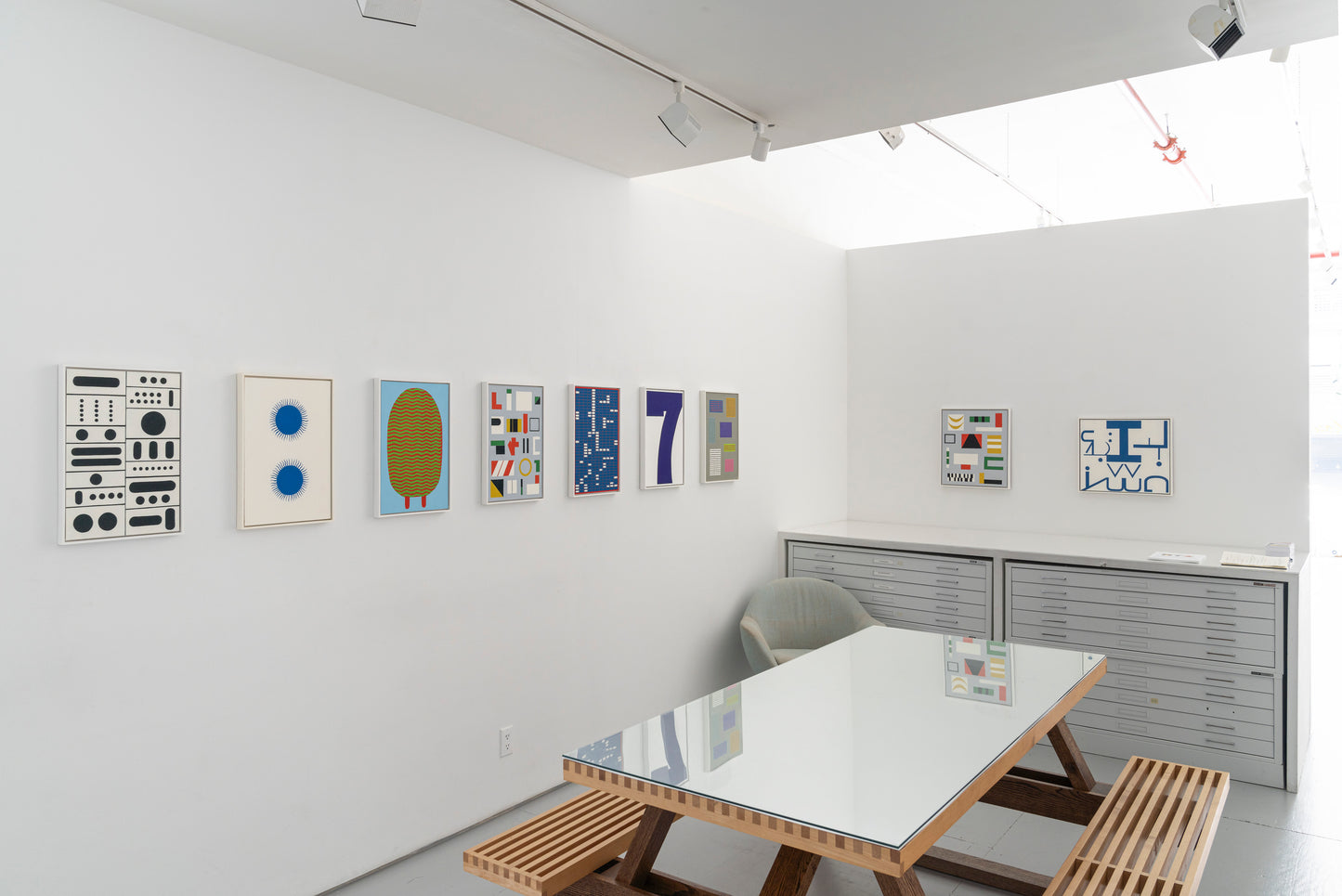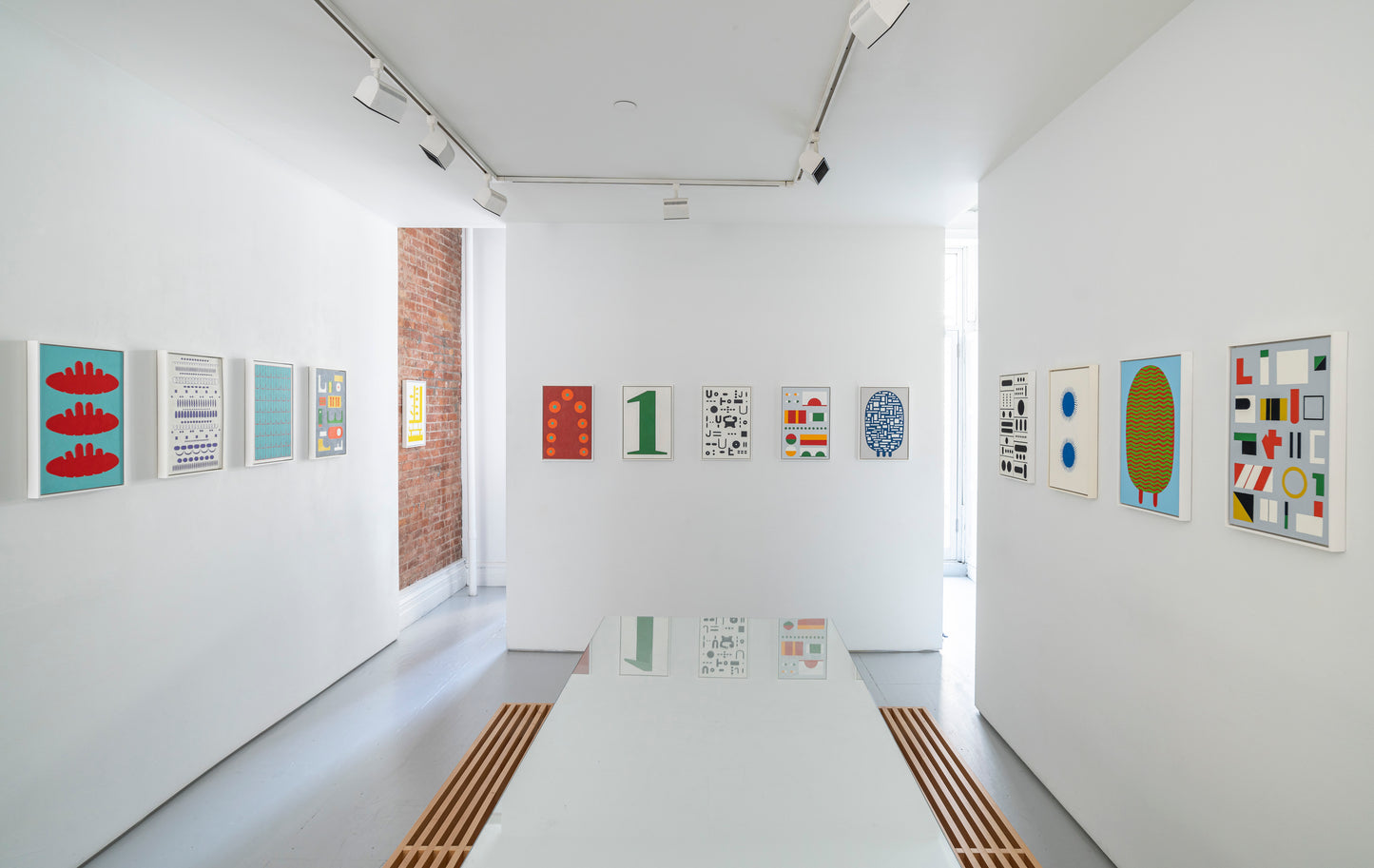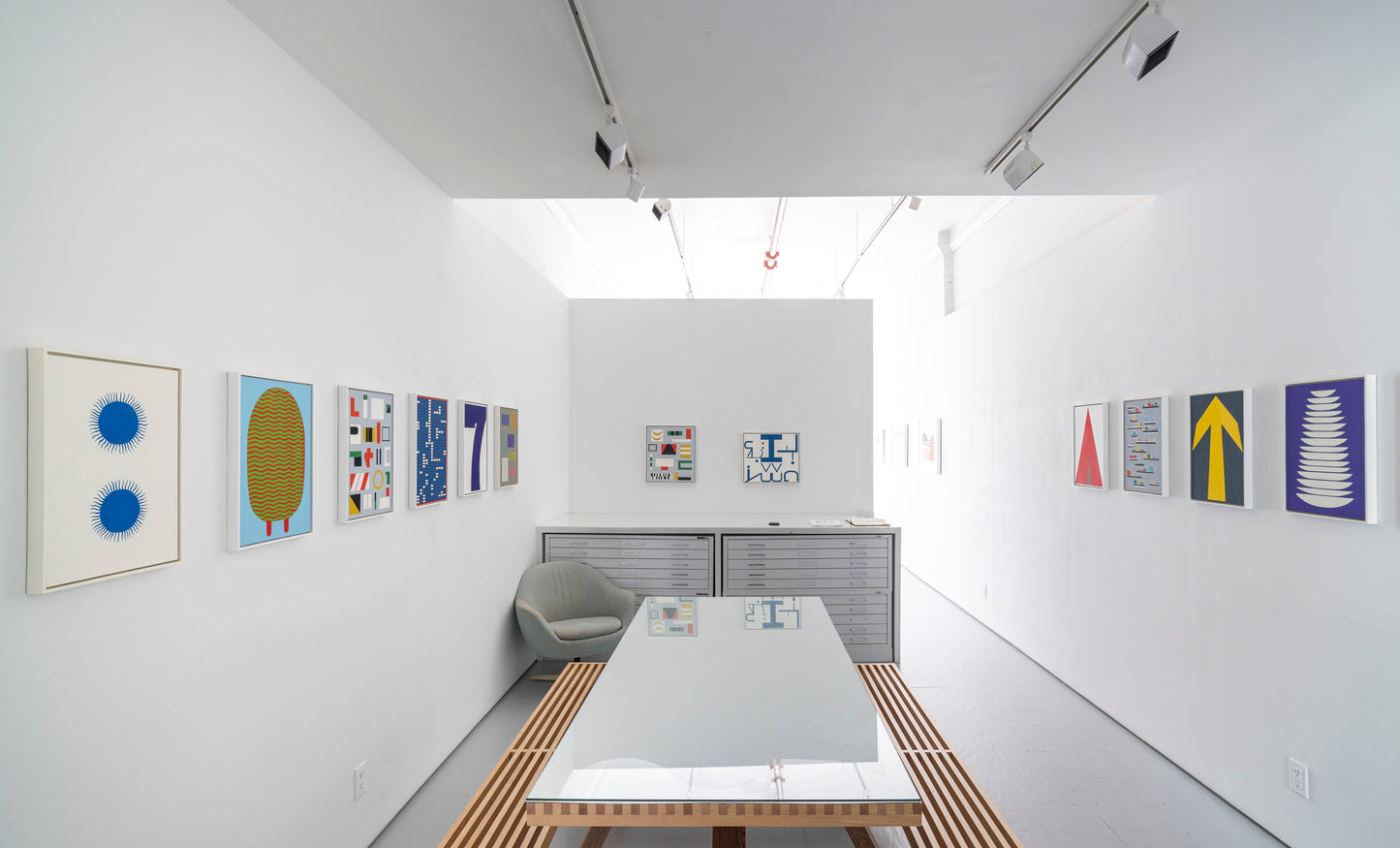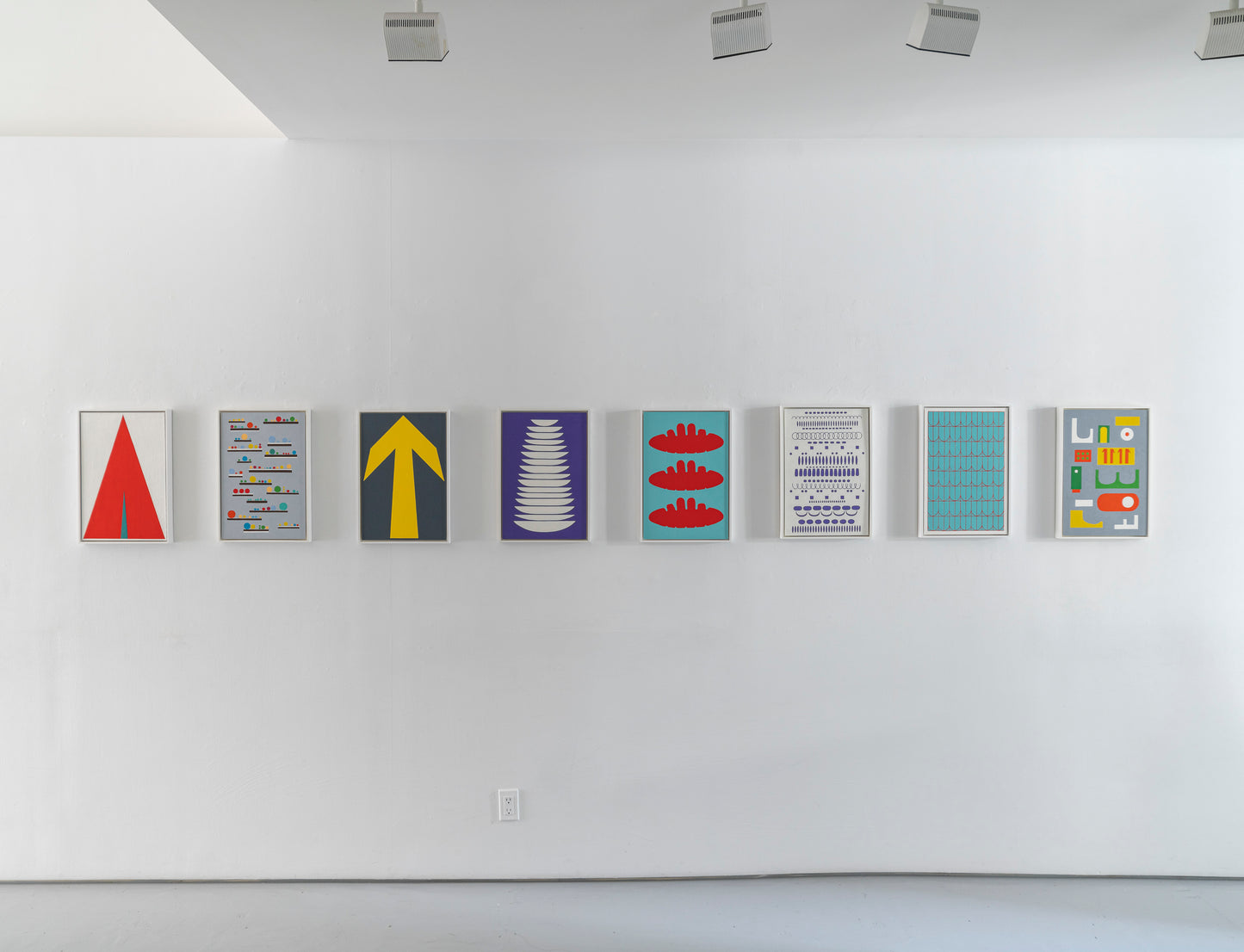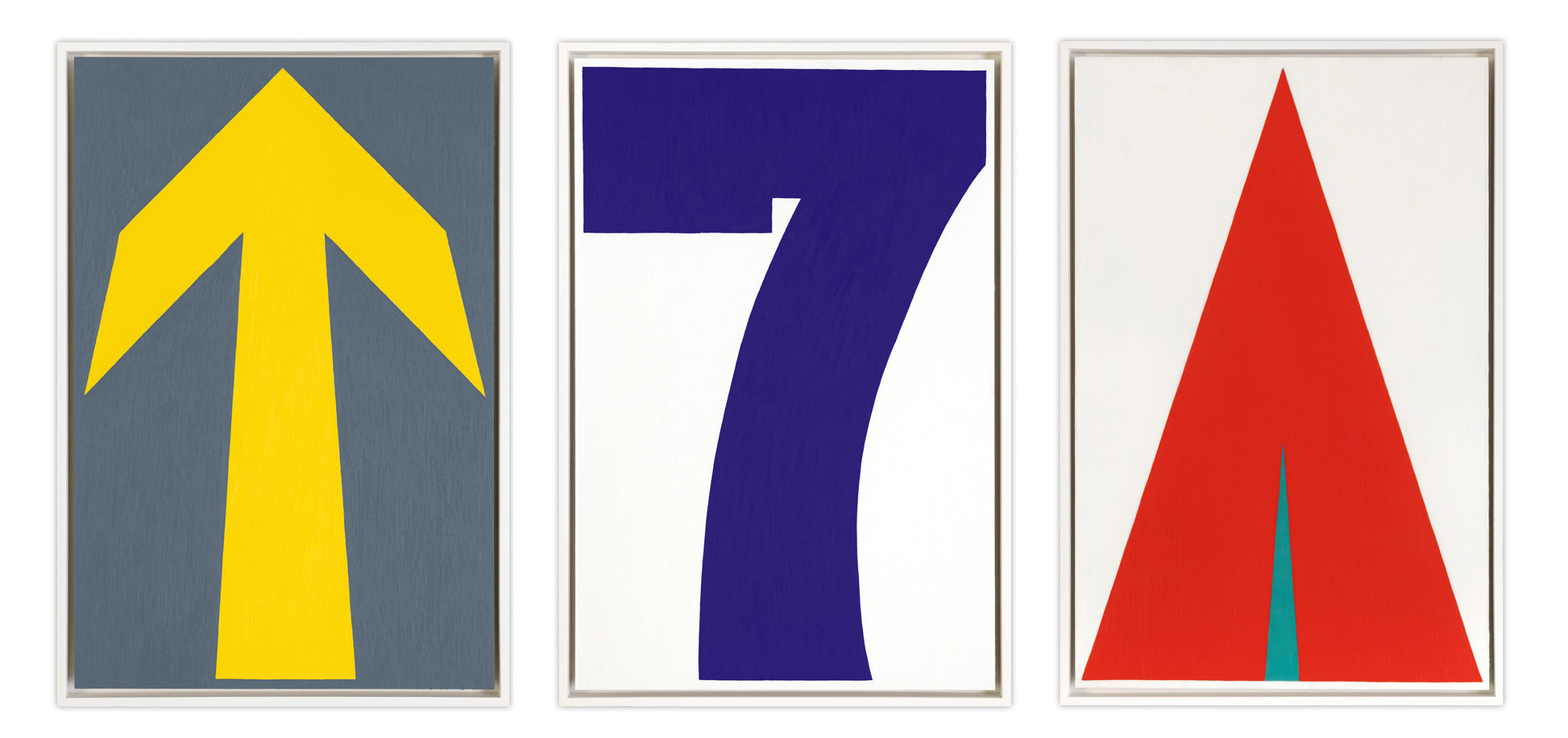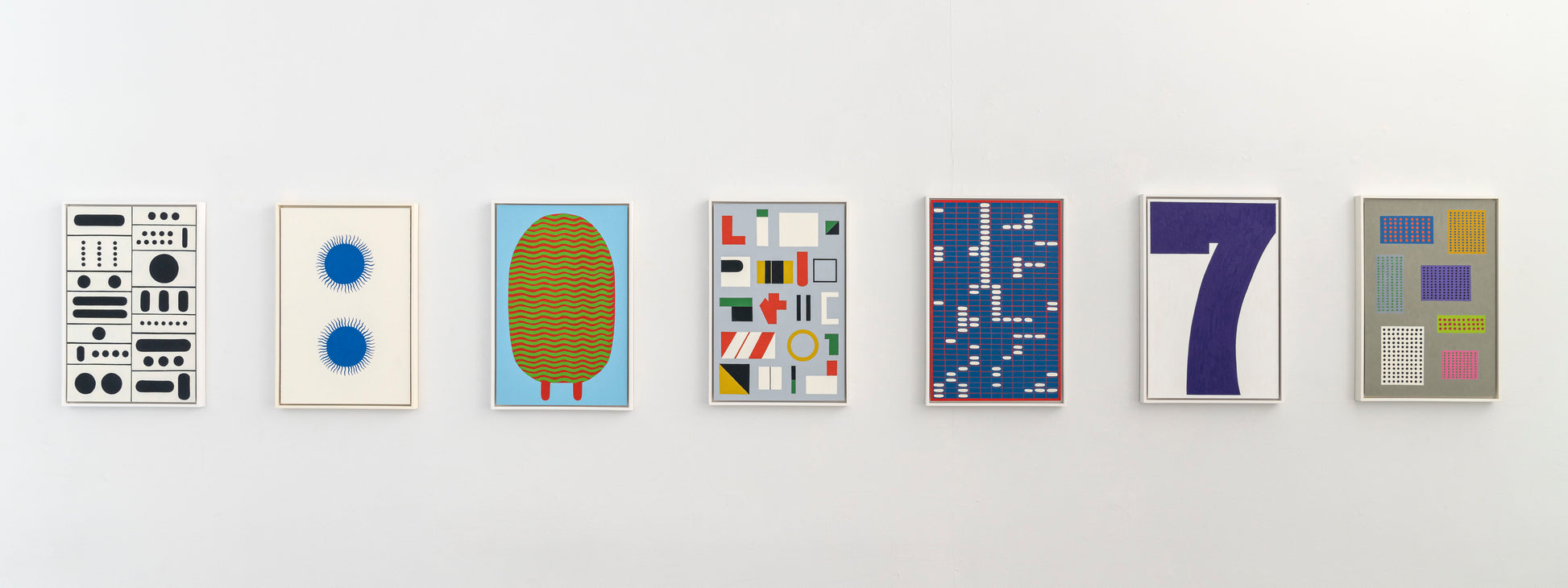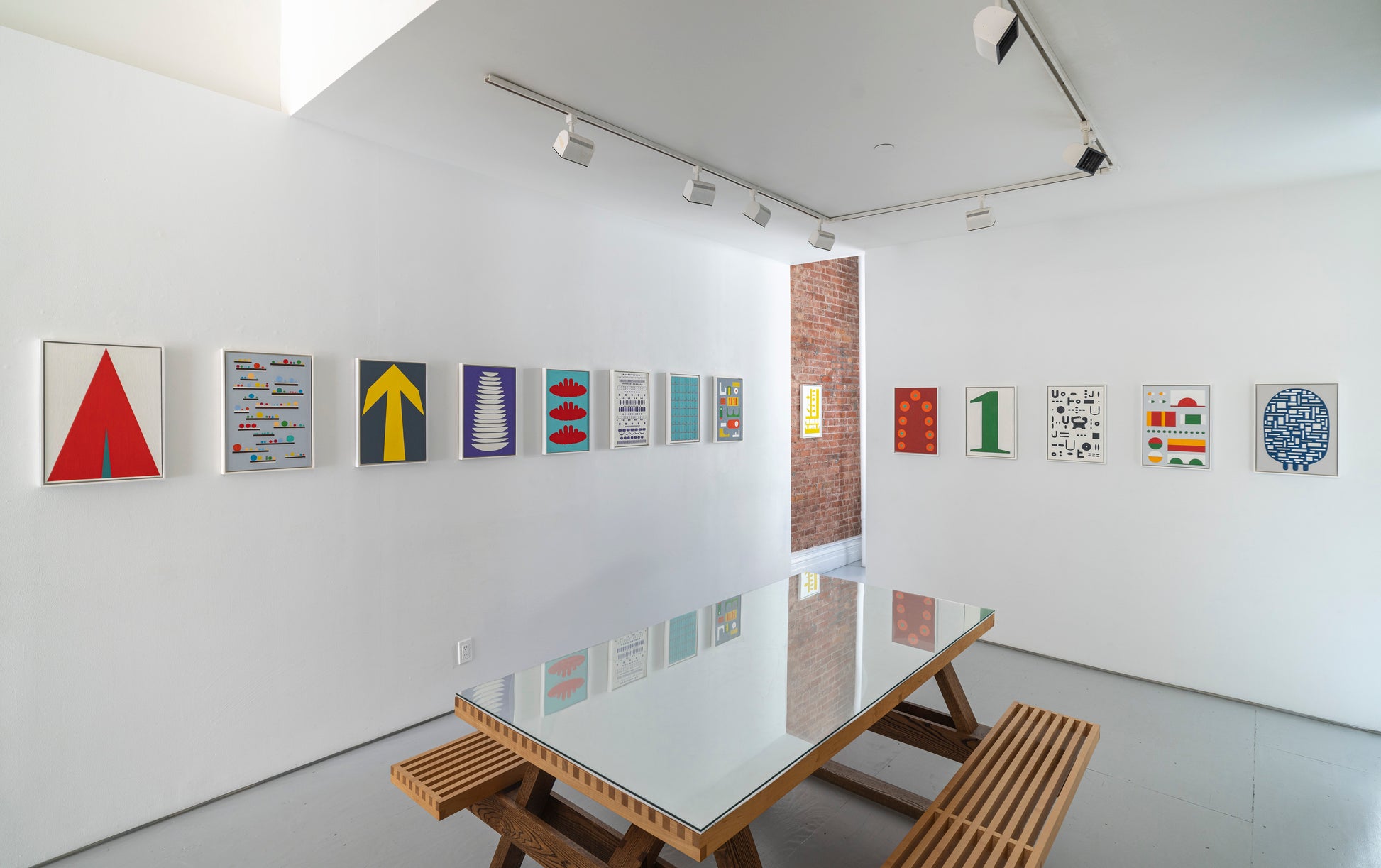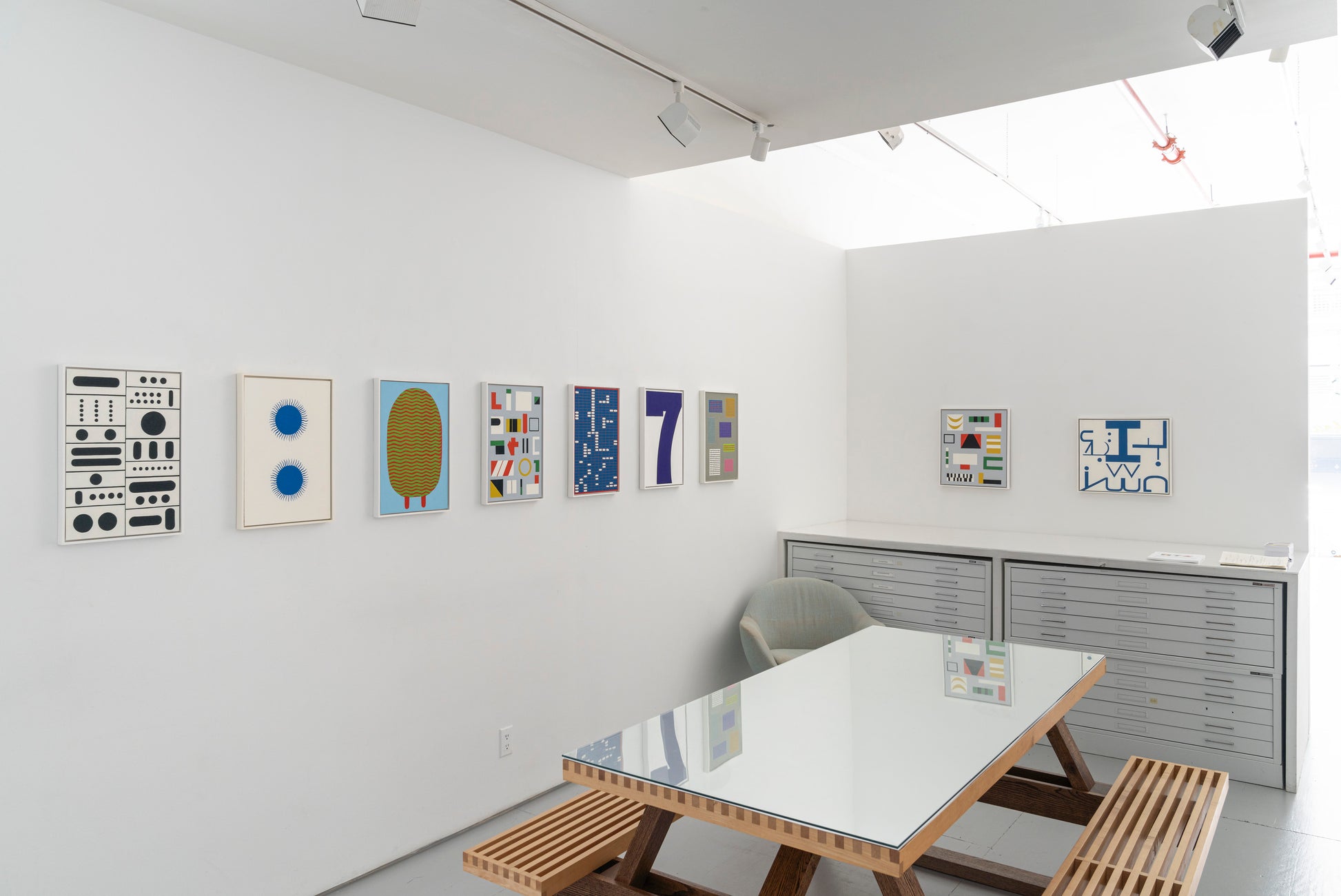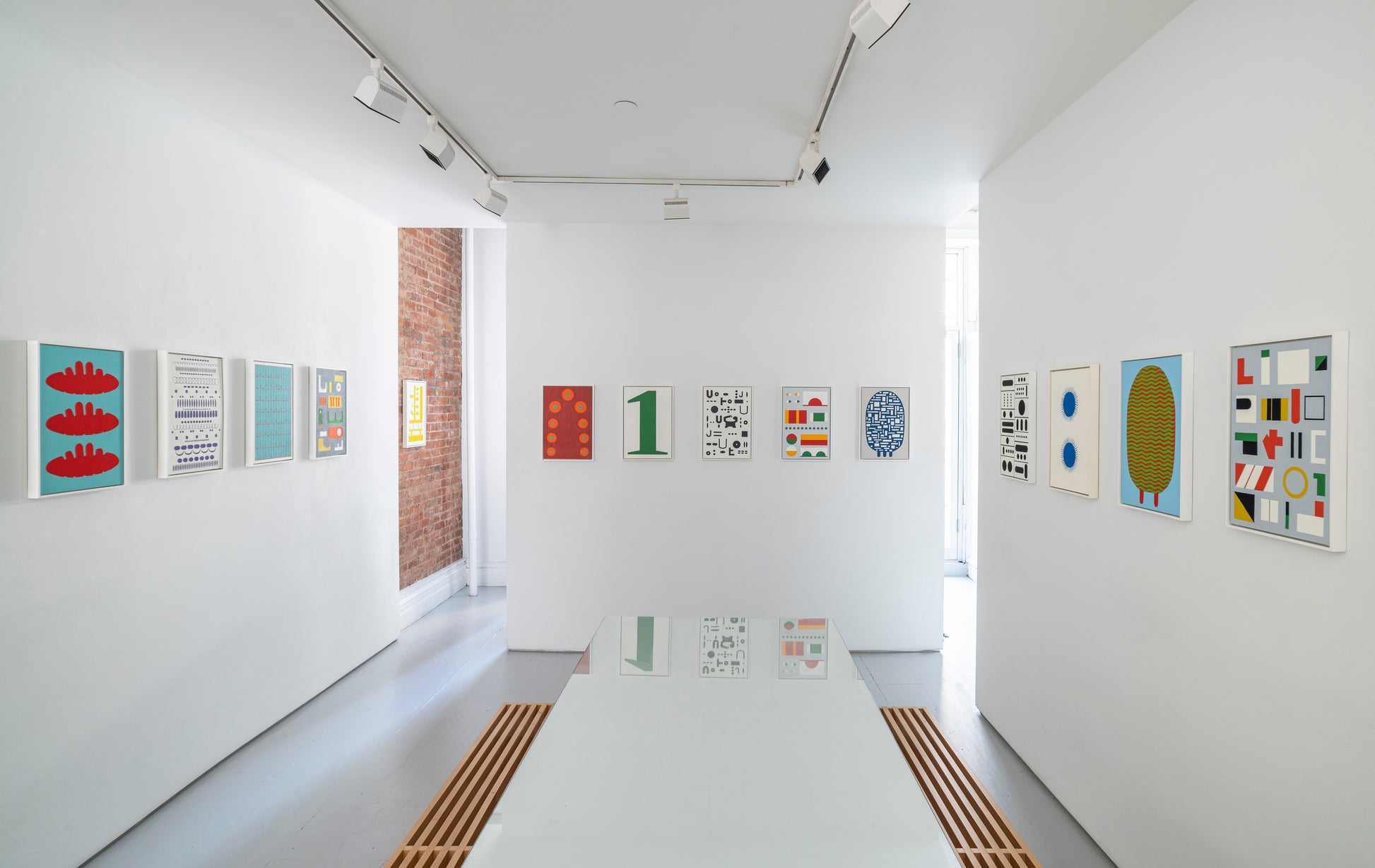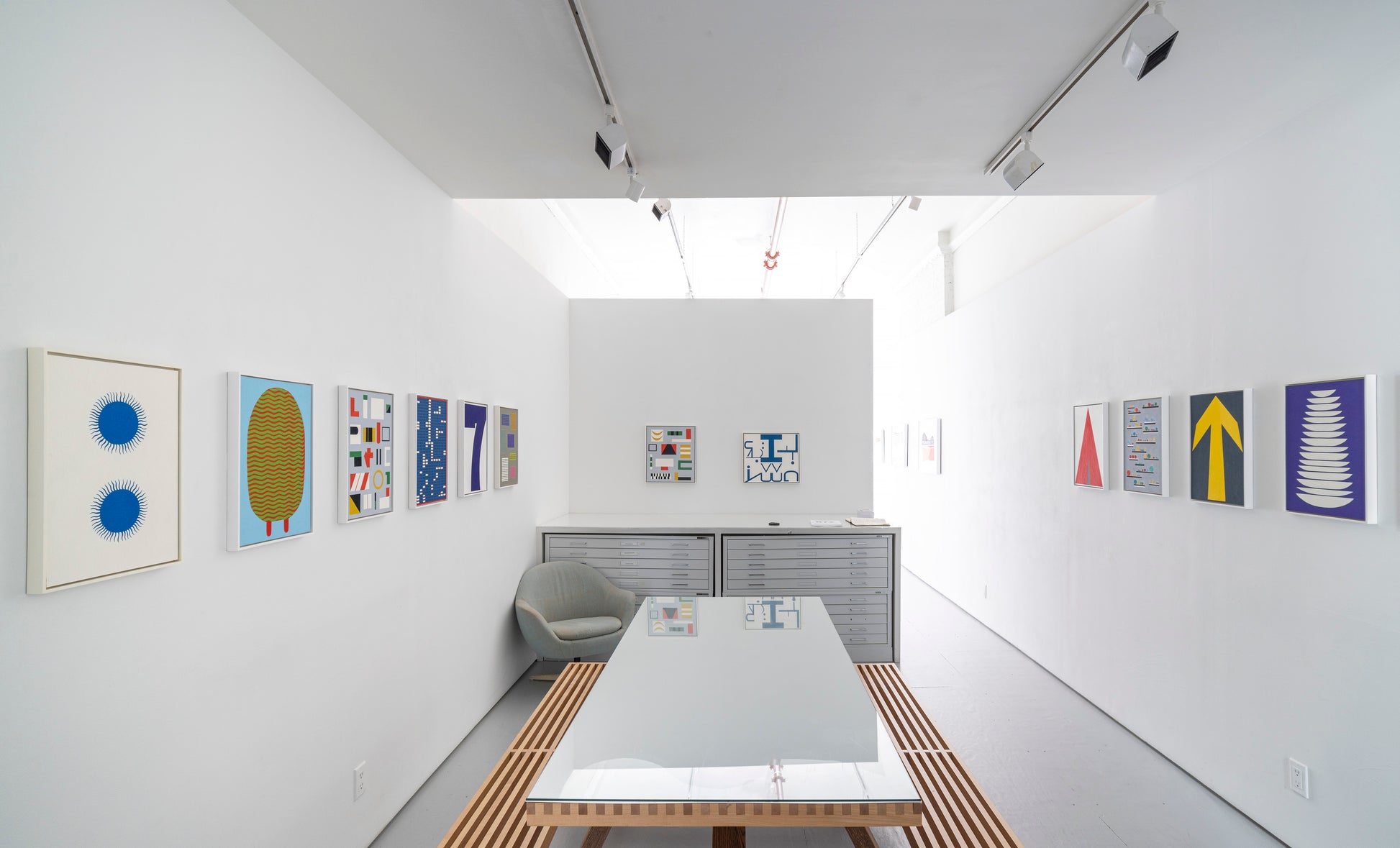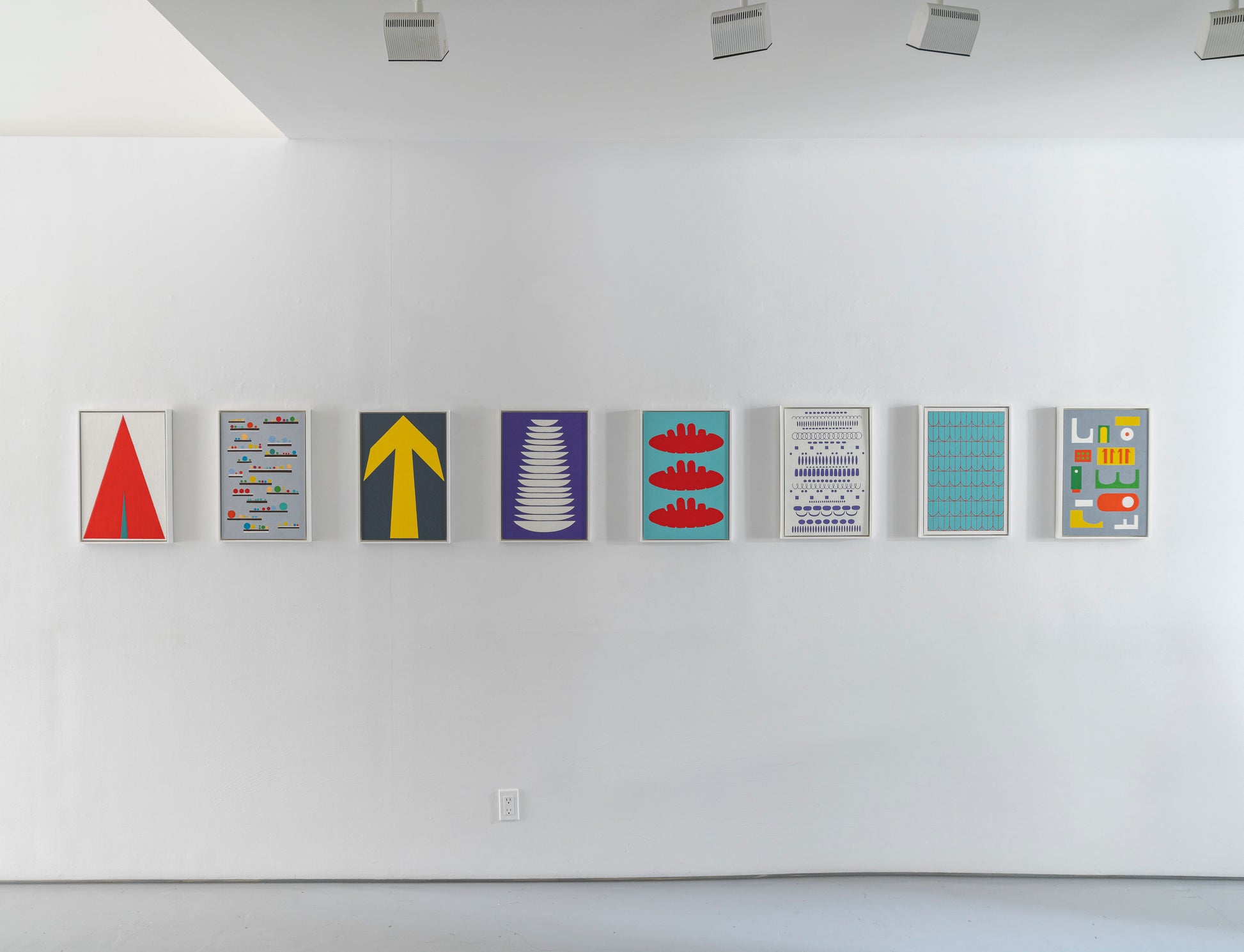Matt Magee | Inventory
May 1 – June 1, 2024
A few years ago I saw a collection of 19th century Mexican retablo paintings. Retablos are devotional images made primarily to be installed behind the altar of a Catholic church. I was especially interested in the small scale of these paintings, their brightly painted subjects, and the fact that they were painted on found tin. I explore a variety of media in my practice, including aluminum cans and detergent bottles, which I use to make sculptures and collaged reliefs. I began sourcing small steel and aluminum sheets from metal supply shops and hardware stores. I have created a body of work inspired by the idea of what retablos are and their function and reliance on historical imagery. Integrating imagery from past and present sketchbooks, I have created small, richly colored paintings about devotion to practice and the singularity of a personal way of seeing. In a broader sense, the imagery relates to mid-20th century geometric abstraction, modernism, 1960s Minimalism, and Postminimalism with an emphasis on stacking and repetition and a language borne from years of looking, observing, and absorbing visual imagery from social media, museums, the news, travel, and nature. As substrates, steel and aluminum sheets provide a seamless surface, smooth and tractable to the point of being fluid, generational, and timeless.
–Matt Magee, 2024
View the exhibition checklist here.
Matt Magee is a contemporary artist who has dedicated his over four-decade career to experimenting with abstract and conceptual art practices. Best known for his minimal abstract geometric paintings, sculptures and prints, his work explores language symbolically with an emphasis on repetition and nods to art historical precedents.
Magee holds an MFA from Pratt Institute and a BA in Art History from Trinity University. The artist was awarded two resident fellowships (2007 and 2015) at the Josef and Anni Albers Foundation, a New York State Foundation for the Arts Grant in 2002 and a Pollock-Krasner Foundation Grant in 1991. His work is found in the collections of the Tucson Museum of Art, Museum of Fine Arts Houston, Phoenix Art Museum, JP Morgan Chase Collection and the Beinecke Rare Book and Manuscript Library at Yale University, among many others.
